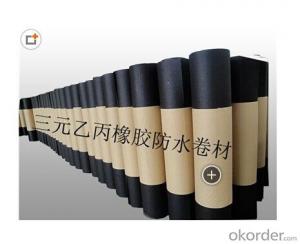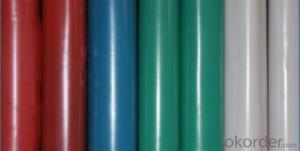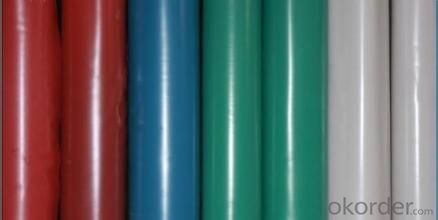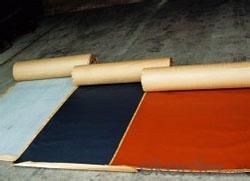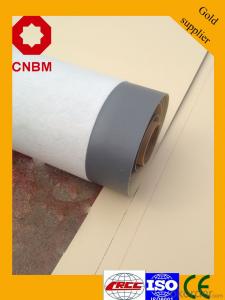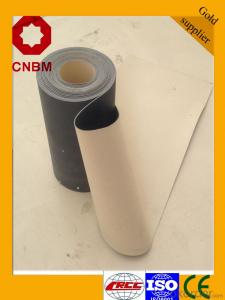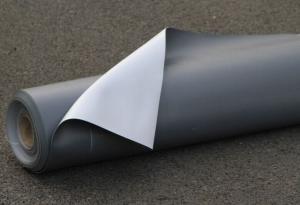PVC Waterproof Membrance for Roofing
- Loading Port:
- Tianjin
- Payment Terms:
- TT or LC
- Min Order Qty:
- 10000 m²
- Supply Capability:
- 15000000 m²/month
OKorder Service Pledge
OKorder Financial Service
You Might Also Like
Quick Details
Type: | Waterproof Membrane | Place of Origin: | Shandong, China (Mainland) | Brand Name: | CMAX |
Model Number: | Excaid-D | thickness:1.2mm,1.5mm,2.0mm: | Raw mateiral:EPDM rubber | width:1200mm: | Standard:GB18173.1--2006 |
length:20m: | Tear strength:>=25KN/m | break tensile strength >=7.5MPa: | waterproof:0.3MPa,30min | break elongation:>=450%: | usage:building waterproof |
Packaging & Delivery
Packaging Details: | PE membrane and pallet |
Delivery Detail: | within 20 days after receiving downpayment |
Specifications
1.ISO9001,ISO14001
2.Top 3 of Chinese waterproof materials manufacturer
3.Customize product property
4.System accessories
Technical Specification:
Type | Waterproof Membrane | |||
Material | EPDM RUBBER | |||
Thickness | 1.2mm; 1.5mm;2.0mm | |||
Weight(kg/m2) | 1.2mm | 1.5mm | 2.0mm | |
1.54-1.58 | 1.79-1.83 | 2.25-2.29 | ||
Length | 20m/Roll | |||
Width | 1.2m | |||
Usage | basements, ponds, Lake, steel structure roofing, underground, tunnels etc. | |||
Packing | 24 sqm/ROLL | |||
Loading in Container | ROLLS | |||
Colors | customized | |||
Enclosure | ||||
a ) SBS modified bitumen waterproof membrane is specially used as waterproof material in cold area
b) APP is specially suitable for areas of high temperature and of strong sun-shine
SBS/APP Modified Bitumen Waterproof Membrane
c)Good performance in good impermeability ,anti-puncture, anti-broker, anti-resistance, anti-erosion, anti-mildew, anti-weathering
d)Possess good tensile strength, elongation rate and size stability which could be well suited the substrate
distortion and crack
FAQ
1.Can you offer free sample ?
Yes , we can offer free sample .
2.What's payment ?
TT or LC both ok .
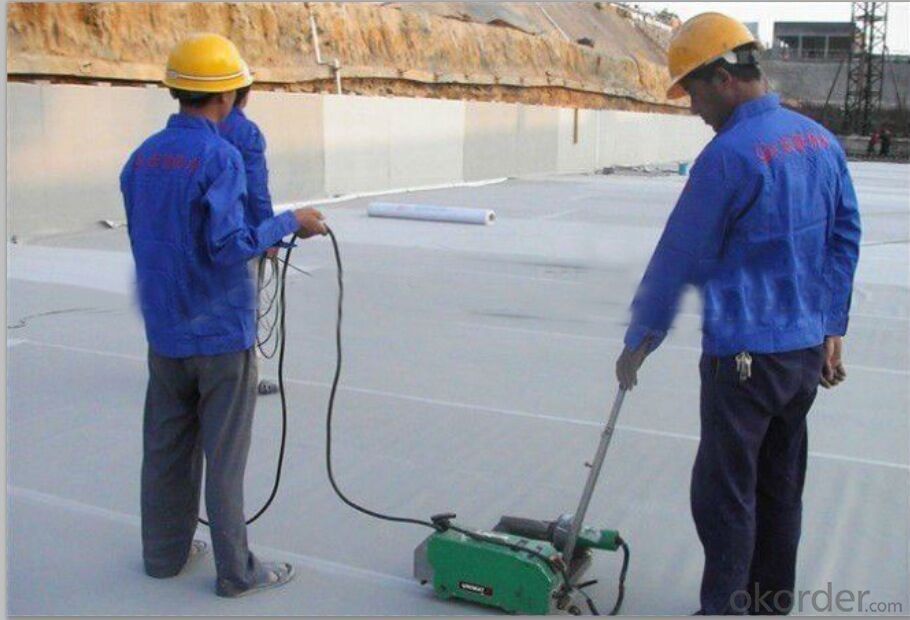
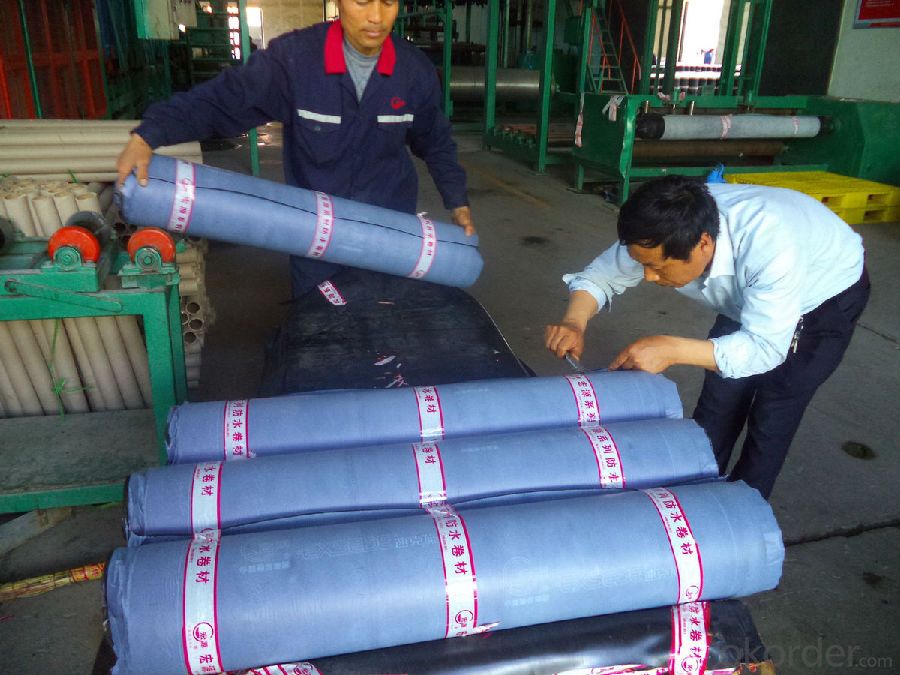
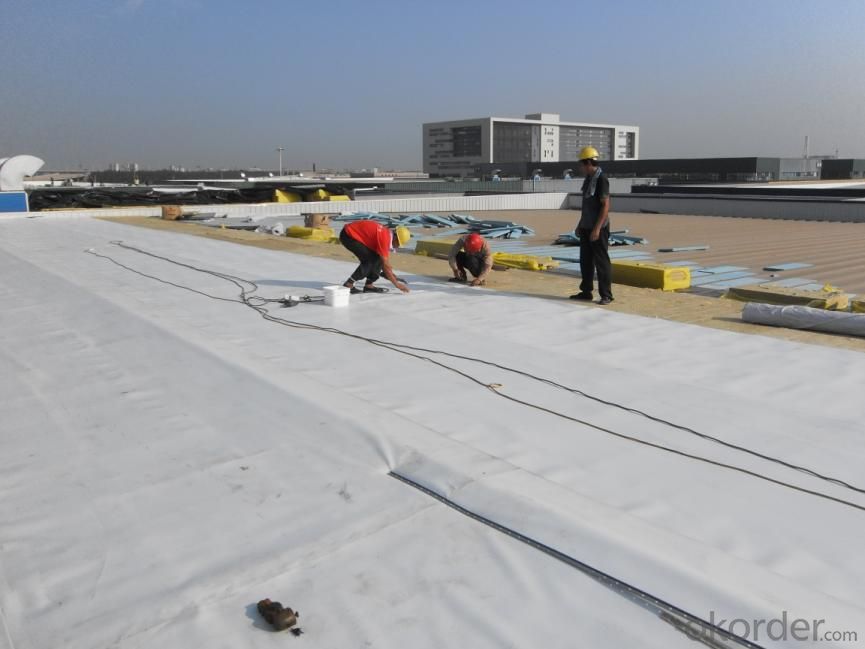
- Q: Can a waterproofing membrane be used in temporary or temporary structures?
- Yes, a waterproofing membrane can be used in temporary or temporary structures. It provides an effective barrier against moisture, protecting the structure from potential water damage during its temporary lifespan.
- Q: Is a waterproofing membrane resistant to algae or moss growth?
- Yes, a waterproofing membrane is typically resistant to algae or moss growth. Waterproofing membranes are designed to create a barrier against water infiltration, preventing moisture from seeping into the underlying structure. These membranes are typically made of materials that are not conducive to the growth of algae or moss, such as synthetic polymers or rubberized compounds. Additionally, waterproofing membranes are often treated with additives that inhibit the growth of organic matter, including algae or moss. However, it is important to note that over time, if the membrane is exposed to constant moisture or damp conditions, it may become a breeding ground for algae or moss. Therefore, regular maintenance and cleaning are important to ensure the longevity and effectiveness of the waterproofing membrane.
- Q: Can a waterproofing membrane be installed on vertical surfaces without causing sagging or drooping?
- Yes, a waterproofing membrane can be installed on vertical surfaces without causing sagging or drooping. The key to preventing sagging or drooping is to ensure proper installation techniques and use of appropriate materials. Firstly, it is important to select a high-quality waterproofing membrane specifically designed for vertical applications. These membranes are typically more rigid and have better adhesion properties, allowing them to adhere firmly to the vertical surface without sagging. Secondly, the surface preparation is crucial to ensure a strong bond between the membrane and the vertical surface. The surface should be thoroughly cleaned, free from any debris, and properly primed before applying the membrane. This helps to establish a solid foundation for the membrane and prevents any potential sagging or drooping. Thirdly, proper installation techniques should be followed. It is important to apply the membrane in a smooth and even manner, avoiding any excessive stretching or folding that could cause sagging. Additionally, any seams or overlaps in the membrane should be carefully sealed to maintain a watertight barrier. Furthermore, it is recommended to use mechanical fixings such as screws or nails to secure the membrane in place. These fixings help to provide additional support and prevent any potential sagging over time. Overall, with the right selection of materials, proper surface preparation, and careful installation techniques, a waterproofing membrane can be installed on vertical surfaces without causing sagging or drooping.
- Q: Are waterproofing membranes fire-resistant?
- No, waterproofing membranes are not inherently fire-resistant. However, there are specific types of waterproofing membranes that have fire-resistant properties and can be used in situations where fire protection is required.
- Q: Can waterproofing membranes be used in cold climates?
- Waterproofing membranes are applicable in cold climates. They are specially engineered to safeguard against moisture and water infiltration in diverse weather situations, including cold temperatures. These membranes are commonly constructed from sturdy and pliable materials that can endure freezing temperatures without fracturing or declining in quality. Furthermore, certain waterproofing membranes incorporate supplementary characteristics such as thermal insulation, which aids in preventing heat loss and upholding a cozy indoor atmosphere in cold climates. All in all, waterproofing membranes serve as a successful remedy for guaranteeing the soundness and durability of structures in cold weather circumstances.
- Q: Can a waterproofing membrane be tested for quality or performance?
- Indeed, it is possible to assess the quality and performance of a waterproofing membrane through various tests. Effectiveness and durability can be evaluated by conducting several tests. One such test is the water penetration test, which involves subjecting the membrane to a specific level of water pressure to determine if any water can pass through it. Another evaluation is the adhesion test, which assesses the strength of the bond between the membrane and the substrate. Furthermore, tests can be carried out to gauge the membrane's resistance to chemicals, UV radiation, temperature fluctuations, and physical stress. These tests contribute to determining if the membrane meets the required standards and can effectively function under diverse conditions.
- Q: Are waterproofing membranes resistant to soil chemicals?
- Yes, waterproofing membranes are generally resistant to soil chemicals. These membranes are designed to withstand various environmental conditions, including exposure to soil chemicals, without compromising their effectiveness or integrity.
- Q: Can a waterproofing membrane be used in areas with seismic activity?
- In areas with seismic activity, it is possible to utilize a waterproofing membrane. In fact, it is highly advisable to deploy a waterproofing membrane in such regions in order to safeguard structures from potential water damage caused by seismic events. The occurrence of seismic activity can result in the formation of cracks and movement within buildings, subsequently leading to water leakage and consequential structural harm. Through the installation of a waterproofing membrane, a barrier is created that effectively prevents water from infiltrating the structure, even amidst seismic events. This aids in the preservation of the building's integrity and prevents the need for costly repairs and potential safety risks. Moreover, waterproofing membranes are specifically designed to possess flexibility and endure movement and vibrations caused by seismic activity, rendering them suitable for implementation in these areas.
- Q: Does a waterproofing membrane provide any protection against radon gas?
- No, a waterproofing membrane does not provide protection against radon gas. Radon gas is a radioactive gas that can seep through building materials, including waterproofing membranes. To protect against radon gas, specialized radon mitigation systems are required.
- Q: Can waterproofing membranes be used on below-grade parking structures?
- Yes, waterproofing membranes can be used on below-grade parking structures. In fact, they are commonly used to protect these structures from water infiltration and potential damage. Waterproofing membranes are designed to provide a barrier against water penetration, thus preventing moisture from seeping into the concrete and causing deterioration. These membranes can be applied to the below-grade walls and floors of parking structures to ensure their long-term durability and structural integrity. Additionally, waterproofing membranes can also help prevent the formation of mold and mildew, which can be a common issue in damp environments such as below-grade parking structures. Overall, using waterproofing membranes is highly recommended for below-grade parking structures to protect them from water damage and extend their lifespan.
Send your message to us
PVC Waterproof Membrance for Roofing
- Loading Port:
- Tianjin
- Payment Terms:
- TT or LC
- Min Order Qty:
- 10000 m²
- Supply Capability:
- 15000000 m²/month
OKorder Service Pledge
OKorder Financial Service
Similar products
Hot products
Hot Searches
Related keywords
